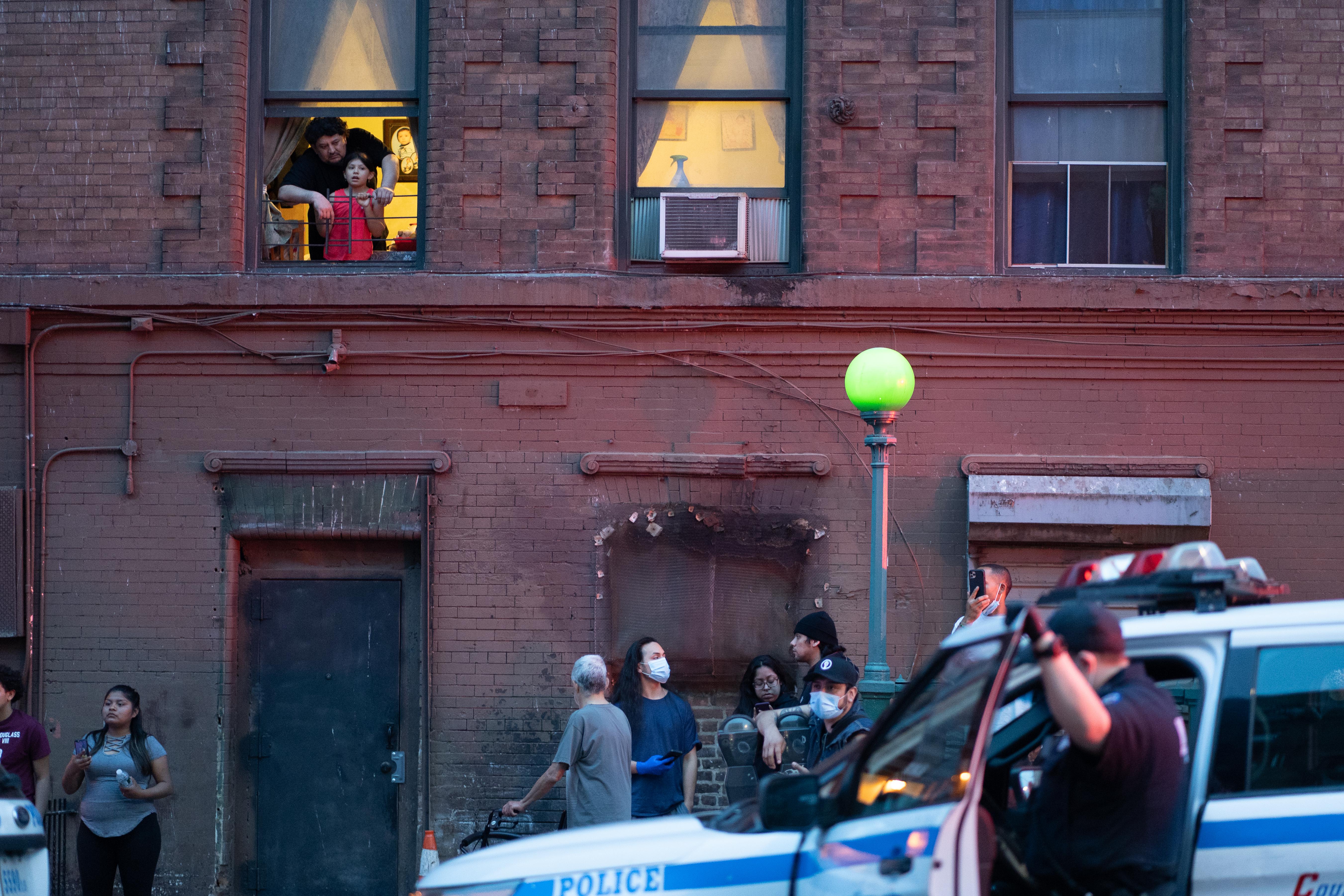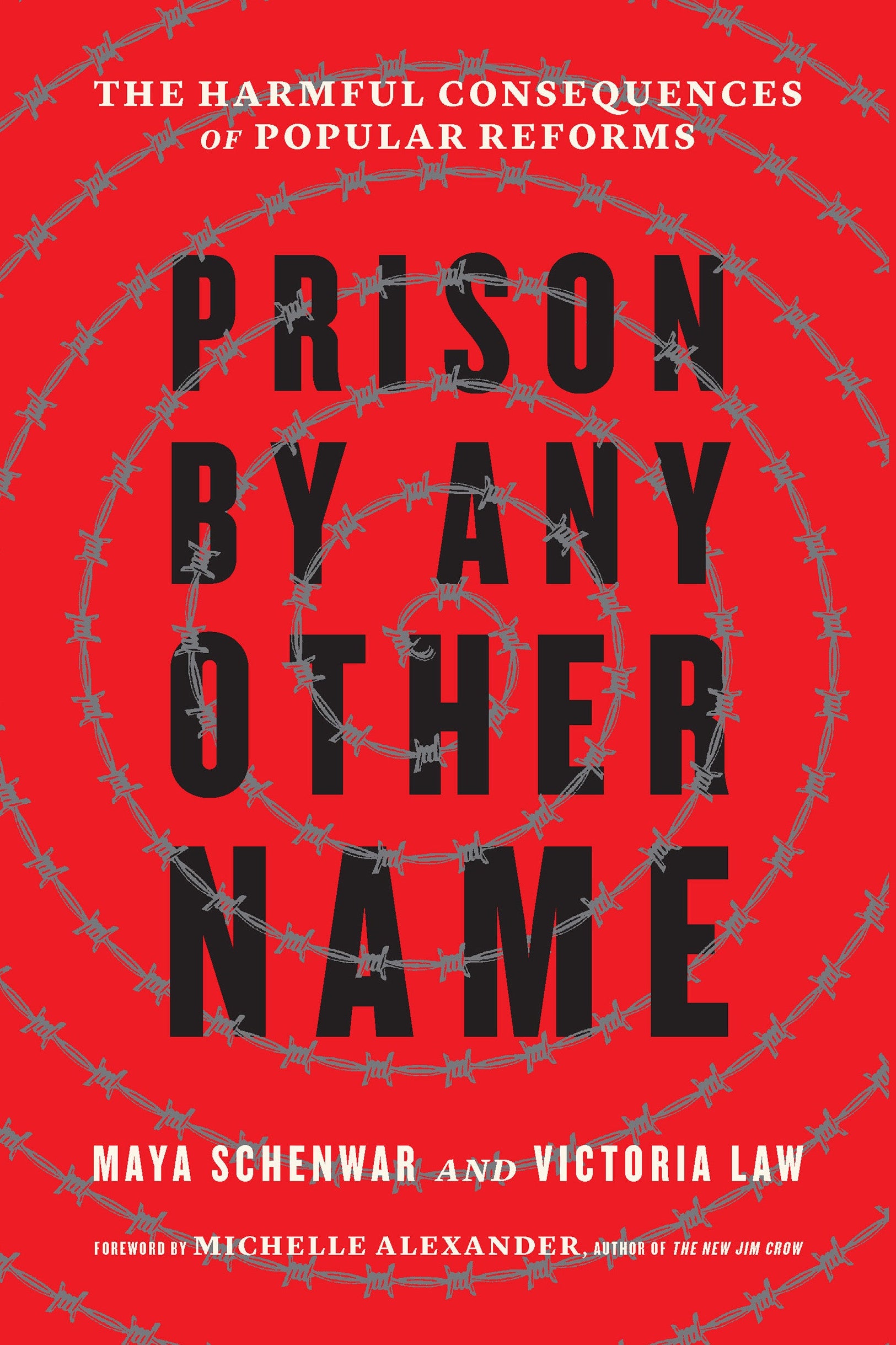This excerpt is adapted from Prison by Any Other Name: The Harmful Consequences of Popular Reforms, published by The New Press and reprinted here with permission. Copyright © 2020 by Maya Schenwar and Victoria Law.
The NYPD billboards that adorn the city’s subways read, “We’re all neighbors making up our communities—straphangers, business owners, teachers, retirees and cops—so let’s reach out, speak out, and look out for each other.” It’s worth noting that aside from “straphangers” (simply a word for people who ride public transit), the people mentioned in conjunction with cops are predominantly middle-class, including older people who are able to retire.
For Malik, a Black twenty-five-year-old community organizer born and raised in East New York, an almost entirely Black and Latinx neighborhood in Brooklyn, the police definition of “community” doesn’t include people like him. The police make an effort to pull older residents, not people his age, into their neighborhood meetings. The police stoke older residents’ fears about gangs, violence, and crime, worsening the neighborhood’s generation gap and pushing them to align with the cops. At the same time, despite increasing media coverage of racial profiling and police violence, many people believe that if police are harassing a person, it’s because that person is doing something illegal. “When you keep telling people the same thing, they start believing it after a while,” Malik says.
In a community policing model, the police always decide which members constitute the “community.” In Los Angeles, says Brooklyn College law professor Alex Vitale, police determine which community members are chosen as the community leaders that the department interacts with when developing its community policing plans. These leaders are nearly always people who tend to be sympathetic to police—such as homeowners, religious leaders, and business owners—while homeless people, youth, and formerly incarcerated people are nowhere to be found. Similar police selection of community participants takes place in cities throughout the country. In 2015, following the rise of the Black Lives Matter movement, Chicago police conducted a “listening tour,” with the stated intention of reconnecting with communities and repairing distrust. However, the meetings were only open to invited guests and the meeting results were not publicized.
The “listening tour” was not atypical of Chicago’s community policing efforts. Meetings organized by the city’s community policing program, Chicago Alternative Policing Strategy (CAPS), are “places where a self-selecting group of residents are mobilized by police to surveil their communities, report information to CPD … and volunteer their time to ‘take back the streets’ in CPD-organized ‘positive loitering events,’” according to a report by We Charge Genocide, a Chicago grassroots organization focused on ending police violence. These meetings don’t strengthen communities; they often harm them. By selecting certain residents to surveil and report on their neighborhoods under the banner of safety, the police department is turning communities into surveillance states. We Charge Genocide calls these initiatives “anticommunity policing,” noting that in reality, “these initiatives sharpen divisions within communities along lines of race and class and fracture social bonds.”
The dynamics of gentrification also play a role in defining who is part of “the community”—and who isn’t. Chicago anti-displacement organizer Lynda Lopez has seen complaints in local Facebook groups about her own neighborhood, Hermosa, a working-class, mostly Latinx community that is quickly gentrifying. Often, when someone posts a notification about a dangerous presence who warrants police attention, “dangerous” equals “young, Latino males.”
It goes beyond social media threats. Chicago’s “Albany Park Neighbors” group, located in one of the most ethnically diverse neighborhoods in the United States, often focuses on businesses that are accused of bringing in “outsiders,” particularly people of color, homeless people, and people who appear to have substance addictions. For example, the group has targeted the local blood bank, saying that the people gathering around the building, many of them low-income and Black, were endangering the neighborhood’s safety. The group also singled out a small, family-owned convenience store, where residents said people exhibiting “drunken behavior” were gathering. After pressure from the group, the store committed to restricting its sales of alcohol and to hiring security guards (both steps that could exact a financial toll from this local business). The group encouraged people to call the police and the local alderman’s office if they observed “drunken behavior.” These residents frame their complaints as a problem of outsiders infiltrating the neighborhood, even when the targets are actually longtime residents who, sometimes, are in the process of being pushed out by gentrification.
K, a young man born and raised in Red Hook, Brooklyn, says that the constant police presence and targeting of Black youth make him feel like an outsider in his home. K’s concern comes at a time when gentrification runs thick in Red Hook as more actual outsiders are moving in. “We have IDs that show our address. It’s obvious we live here,” he says. “It’s like they’re trying to kick us off of where we grew up at.”
Community policing takes advantage of the fact that many white people already assume the “eyes and ears of the police” role in society, calling the police on perceived—usually Black or Brown—“outsiders.” This dynamic is evident in well-publicized events, such as white people calling police on Harvard professor Henry Louis Gates Jr. for breaking into his own house and police swarming musician Bob Marley’s granddaughter as she exited an Airbnb, and in the less-publicized moment-to-moment experiences of many millions of people in this country every day.
Meanwhile, some groups are simply left out of the definition of “community member” in the context of community policing. One case in point: suspected gang members. “What they’re trying to do … is to leave people who are gang members out and to tell communities, ‘This is not you. This is the bad element. We want to talk to you,’” notes New York anti-policing organizer and scholar Josmar Trujillo. “The police want you to cut [gang members] off, like an arm that has gangrene.” In other words, gang members are made to seem like a group outside of community—a group that is disposable. This is the kind of logic that encourages K’s older neighbors to fear the children on their block as they grow into young adulthood. It’s the logic that allows police to harass, intimidate, arrest, and brutalize people with impunity in their own neighborhoods. It’s also the logic that overlooks the reasons that gangs tend to exist in underresourced, marginalized communities in the first place.
Community policing normalizes the idea that police should be “in charge” of programs that might ordinarily be outside their wheelhouse. Placing cops in charge of other programs and services, such as mental health or homeless services, means that departments can justify the placement of police pretty much anywhere.
In a wide-ranging study of community policing in Seattle, political science professor William Thomas Lyons notes, “Community policing colonized community life.” At the same time, he writes, the infiltration of the community by the police made it possible for the police department to “shield itself from critical public scrutiny,” because so much of its work was done in partnership with community groups. The “community” end of the partnership becomes simply a “docile and dependent client,” and community policing ends up “replacing more critical forms of public scrutiny with citizen surveillance plugged directly into state information systems.” In other words, community policing became a brilliant public relations move that bolsters both popular support and additional resources for the police without demanding real change or safety. Not only does it increase the amount of surveillance in play and stoke the fires of existing power dynamics in the community, but it also masks the actual role of police on the ground.
Trujillo challenges the idea that “building trust” with the police—a phrase that pops up again and again in reformers’ arguments for community policing—is ever a good thing. “When you trust someone, you let your guard down, you let things bypass, you give cops the benefit of the doubt,” he says. “We know what the relationship with the police is, and it’s been repeated to us generation after generation; it’s clear. We’re not supposed to mend bridges with an abuser. We’re supposed to hold that abuser to account.”
Prison by Any Other Name: The Harmful Consequences of Popular Reforms
By Maya Schenwar and Victoria Law. The New Press.

